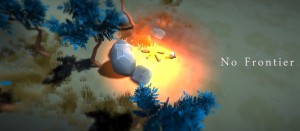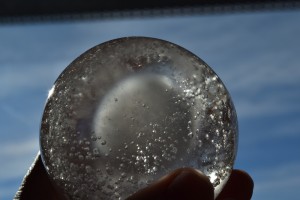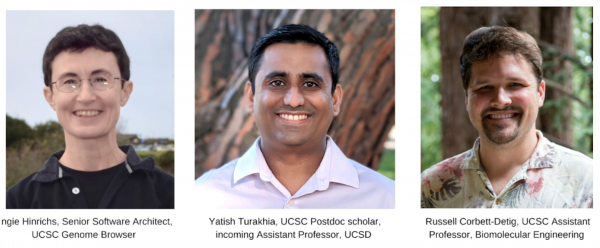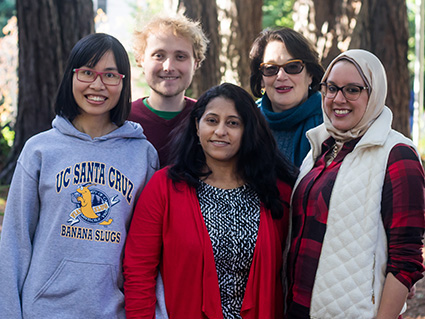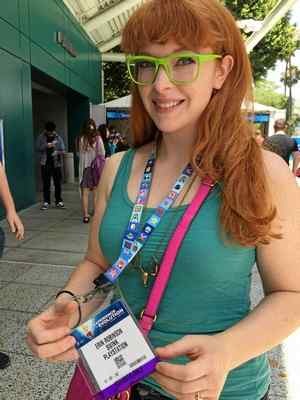Events
DANM Digital Artists Present Thesis Work Exhibition

By David Harris
MFA student, Digital Arts and New Media, UC Santa Cruz
Special to Santa Cruz Tech Beat
March 31, 2016 — Santa Cruz, CA
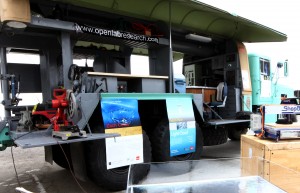
This repurposed military vehicle is a mobile studio for art, science, and making. (Artist: Sean Pace)
For the past two years, I’ve taken a break from my past career of theoretical physics and journalism to concentrate on making art. Specifically, new media and digital art as part of the UCSC Master of Fine Arts program in Digital Arts and New Media (DANM). In that time I’ve buried myself in physical computing, electronics, and sculptural installations to create pieces that are infused with the science of my background. It’s been an invigorating experience mixing with my colleagues who come from backgrounds in fine arts, science, graphic design, animation, and a host of other fields. And now, the program is coming to a close before I head off to spend the next portion of my career as an artist.
Community is invited…
In late April, Santa Cruz community members are invited to see the results of the UCSC DANM MFA program. The graduating cohort will present a symposium at the Museum of Art and History on Friday, April 22 and at the Digital Arts Research Center, UCSC, on Saturday, April 30. The exhibition of their thesis works will be at UCSC from Thursday, April 28 – Sunday, May 1. Information about the show and artists can be found below and at http://danmmfa.ucsc.edu.
Although the students form an eclectic mix of artists from a wide range of backgrounds, their work is being presented under the unifying show title of “Blind Spot.”
Curator Dorothy Santos says, “The title of the exhibition refers directly to the punctum caecum or blind spot. It is the area of the eye where photoreceptors do not exist, hence the inability to render or detect an image. In order to see what is in our blind spot, we must shift and alternate our positioning or gaze. But it certainly does not mean that which we cannot see does not exist. In a metaphorical sense, these artists create in such a space that requires the viewer to move and shift for the work to be seen and experienced.”
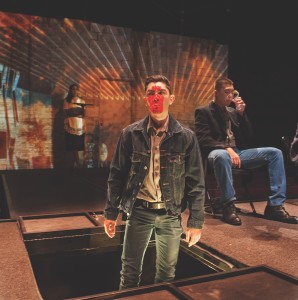
Narco culture is explored through a reinterpretation of Shakespeare’s Macbeth. (Artist: Nick Andrade)
The art itself covers work in the critical spaces of game design, performance, post cinematic space, scientific theory, economic systems, or interactive media to resist and expand long-established, canonical meanings of art.
The artists and their works include:
Nick Andrade: An exploration of Narco culture through an interpretation of Macbeth.
Hope Hutman: A re-imagining of Homer’s Odyssey through interactive improvisation on twitch.tv.
Timothy Furstnau and Andrea Steves: A collection and archive of a taxonomy of capitalism and global economic systems.
David Harris: A sculptural installation investigating alternative perceptions of color in our contemporary world.
Sarah Fay Krom: A German Expressionist-style playable space that requires players to take unique perspectives.
Marcelo Viana Neto: An exercise in participatory economics and game design pedagogy.
Adrian Phillips: A playable experience for two to explore the colonial dynamics of frontier fantasy games.
Ben Spalding: An exploration of multi-player narrative design through critical software design and development.
Michael Thomét: A confrontation of players based on alternative experiences and narratives.
Sean Pace: A repurposed military vehicle as a platform for arts outreach, social justice, and field research.
Steven Trimmer: A voice interactive sound installation based on research about modal vocalization.
Zach Corse: An immersive large-scale installation influenced by physics, information theory, and Japanese glass fishing floats.
Exhibition:
- Open Thursday, April 28 through Sunday, May 1, 2016 at Digital Arts Research Center, UC Santa Cruz
Symposium:
- Friday, April 22, 2016, 7:30-9 pm at Santa Cruz Museum of Art and History
- Saturday, April 30, 2016, 1:30-3 pm at Digital Arts Research Center, Room 230, UC Santa Cruz
Reception:
- Saturday, April 30, 2016, 5-9pm at Digital Art Research Center (DARC), UC Santa Cruz
Performances:
- Hope Hutman, Twitch Odyssey, featuring Tom Johnson as Homer
- Friday, April 29, 2016, 4pm and Saturday, April 30, 2016, 4pm at Digital Arts Research Center, UC Santa Cruz
Learn more here: http://danmmfa.ucsc.edu
###
If you wish to republish this article, please follow our Terms of Use.
###
Tagged DANM, UC Santa Cruz, UCSC DANM MFA Exhibition





